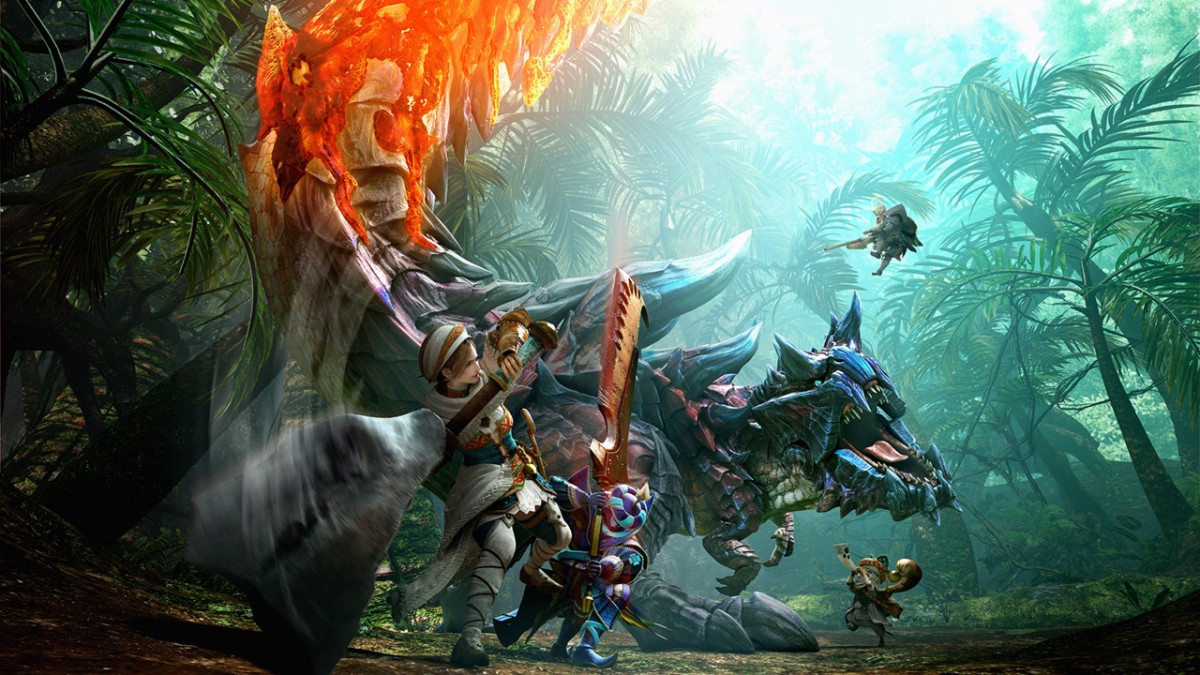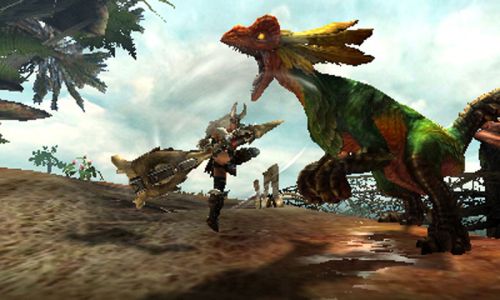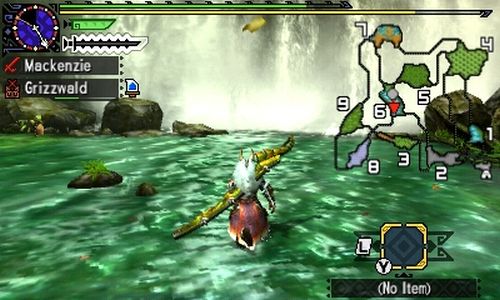

Technically speaking, Monster Hunter Generations isn't a proper full-on sequel. Think of it like a scenic detour, the kind you take when you want to drive by the world's largest ball of aluminum foil. Generations strips out a lot of story and circumstance from the main game in favor of adding tons of new weapons, quests, armor sets, and just about everything else. It pays homage to its roots while simultaneously pointing off to the side and saying "How about we go this way for a bit?"
The basic set-up in Generations is the same as always. You're a hunter, the guild has quests you can sign up for, and village elders have tasks they'd like you to complete. Pick a weapon, get yourself equipped for the run and head through the gate. When you come back, you'll have a satchel full of stuff gathered and carved from conquered enemies, just the thing for crafting new armor and upgrading weapons. Repeat this process until the next game comes out.

The big new feature in Generations is the addition of hunting styles and hunter arts, each adding a dash of salsa to the main Monster Hunter meal. Before heading out on a quest you'll choose between Guild, Striker, Aerial, and Adept styles. Each one changes your weapon combos while giving you access to a new ability. For example, Aerial lets you roll and leap off of monsters so you can initiate mounts without standing on a ledge. In return, you might sacrifice a stock evasive maneuver or lose a finishing blow from your cherished attack combination.
Pairing nicely with hunting styles are hunter arts, abilities that can be charged up and unleashed out in the field. There are a handful of basic arts players can equip at all times, things like a long distance evasive roll to make a last minute escape or a basic recovery skill. Depending on the equipped weapon, hunters will also have access to exclusive abilities, some of which are spectacular to behold. Ever tried using your gunlance as a rocket? How about a huge meteor slam with a hammer?

These new styles and skills sound like they change the game's core tactics, but in reality they're only a new layer of icing. Raspberry instead of chocolate. You'll choose styles based on the monster you're taking down, the combos you prefer, or just because you forgot to change it from something else. No skill gives you an unfair advantage, and none are required to beat a quest. They're just big and exciting additions to the series that lend a gentle arcade-style feeling to the game.
Generations did a lot of addition and subtraction to evolve from the Monster Hunter 4 Ultimate seed. The main storyline is practically gone, as are huge scripted battles. Hunting styles, hunter arts, playable palicos, and four new flagship beasts make an appearance, which more than makes up for those absences. There are also more weapons and armor as well as more quests, making Generations quite a bit larger than previous entries in the series.
Co-op gains quite a bit from Generations' tweaks to the formula. The basic hub set-up is the same as Monster Hunter 4, which is great news since that game really nailed multiplayer. Search for a room or create one from scratch, then start hunting. There you go. The quality of your experience will vary depending on the combatants who join, but if you've got a band of regular warriors to play with, co-op is one of the finest modes in the business, certainly the best cooperative experience on the Nintendo 3DS.
Having hunting styles and hunter arts sprinkles a touch of tactics onto team crafting in Generations. You might want extra Aerial style hunters if the subquest calls for mounting, for example. Of course, most rounds have hunters choosing whichever style suits their personal taste, which is also perfectly acceptible. The beauty of Generations' skills is that they don't throw anything out of balance for casual or even serious players. Speedrunners might have a few bones to pick with the additions, but everyone else can prepare to have an awesome time.
Monster Hunter has always been about nuanced combat strengthened through practice and attention. The hunter arts ratchet that down that ever so slightly, especially the dramatic rolls and jumps in Adept and Aerial styles. No skill is a surefire path to victory, however. The MH team made sure everything was balanced with sacrifices for every advantage. Old monsters survive the new skills with grace, and the new monsters put those budding talents to the test. In fact, the new flagships are some of the most dynamic and interesting monsters in the series. Especially if you like dinosaurs with fire swords as tails!
There are fans on both sides of the love/hate camp with the changes made in Generations. When it comes down to it, this new Monster Hunter still feels like Monster Hunter. Sure, there's a bit more spark and fire to it, but when you're out with your friends chasing a Duramboros through the mountains, those point value nitpickings just don't matter.